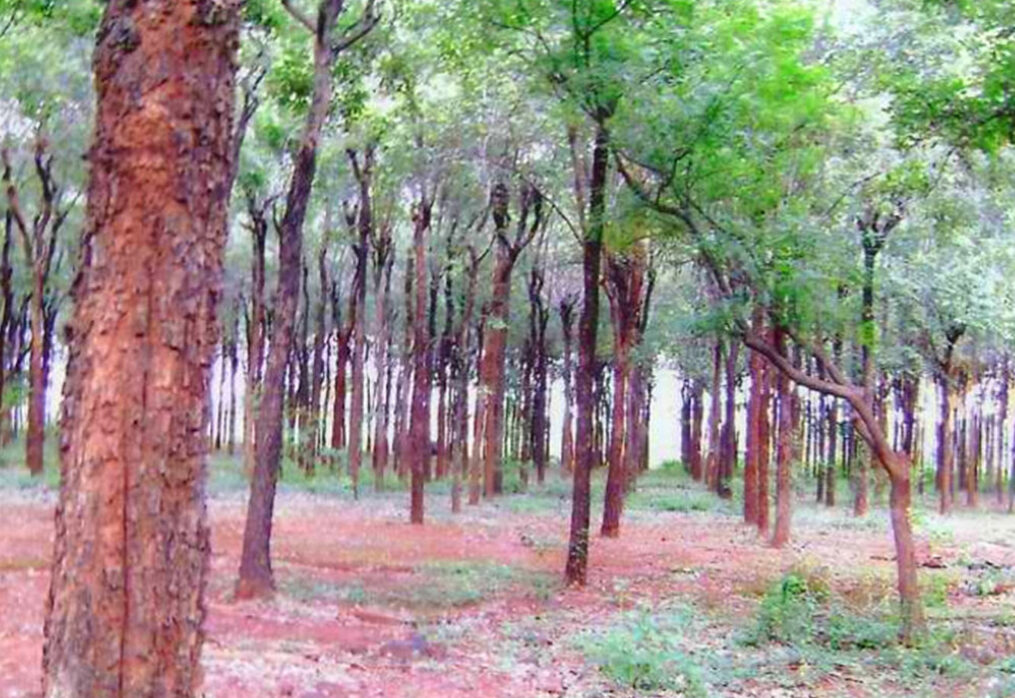Red Sandalwood Trees
Although India has actually long been understood for its sandalwood (Santalum cd), it is only in the past decade that farmers have actually shown passion in growing the plant in their yard. Up until 2000, sandalwood was greatly restricted to the woodlands of Karnataka, Tamil Nadu and Kerala and haciendas of these state governments. There was no growing on personal agricultural land in the remainder of the nation. Yet a policy change in Karnataka and also Tamil Nadu in 2001 and 2002 respectively permitted individuals to grow sandalwood. This influenced various other states.
In the past four years, 2,800 ha of farming land came under sandalwood growing in Gujarat, Andhra Pradesh, Madhya Pradesh, Maharashtra as well as Uttarakhand, apart from Karnataka and also Tamil Nadu. The figure is climbing by around 600 ha each year, according to an estimate by the Institute of Timber Science and Technology (IWST), Bengaluru, an introducing institute for sandalwood research study. This will certainly assist revitalize the country’s lost delight in the sandalwood profession.
From imperial tree to people’s treeIndia was once a world leader in sandalwood production. In the 1960s, it generated practically 4,000 tonnes of sandalwood. This is significant offered the worldwide demand– 6,000-7,000 tonnes per year (see ‘Sandalwood supply at stake internationally’ on p24). But contraband came to be widespread because of the timber’s high worth and also need in the marketplace. Thefts progressively decimated the sandalwood woodlands.
The leader of the kingdom of Mysore, included in the issue. Under the act sandalwood was proclaimed an imperial tree. Karnataka as well as Tamil Nadu later embraced the commandment and kept sandalwood under government control. But this did even more damage than great as many lawful commitments were imposed on sandalwood cultivation. “Having a sandalwood tree in your yard or ranch was even more of a problem than advantage. You had no rights of ownership, but if your tree obtained stolen you were in trouble with the authorities.
The benefits of the crop to a producer are stupendous. After the age of seven to 8 years, the heartwood of a sandalwood tree grows by 1 kg every year, and its market value is between Rs 3,000 and Rs 6,000 per kg. It is the only timber worldwide to be sold by weight. According to IWST price quotes, the cost of sandalwood growing per hectare has to do with Rs 30 lakh for the entire crop cycle, however the returns differ from Rs 1.2 crore to Rs 1.5 crore. IWST recommends a 15-year harvest cycle of sandalwood for optimum advantage.
Subjugating the wild sandalwoodBecause 2001, IWST has been working gradually to create growing protocols for the crop. IWST has actually established protocols for consistent germination, illness control and tissue culture propagation. It has likewise determined friend crops or hosts of sandalwood. Being a hemiparasite, sandalwood calls for macronutrients from the origins of other plants. Currently, the institute has a full set of instructions for farmers wishing to cultivate sandalwood. It claims that around 350 sandalwood plants should be grown per acre (0.4 ha) with 150 host plants. Mimosa pudica, typically known as touch-me-not, has actually been determined as the most effective host for the initial growth of the seedling, while pigeon-pea and also fruits like sapodilla, papaya and also pomegranate make great hosts at a later phase.
” Unlike monoculture haciendas where the waiting period returns no results whatsoever, in sandalwood, a farmer can obtain an income from the host plants for seven to 8 years, after which they perish and a pure sandalwood plantation continues to be,” Ramakantha explains. IWST suggests organic monitoring of the plant, as it is not located to respond well to chemical inputs. This is an added advantage as the dirt is protected and also cultivation prices are reduced. The institute likewise gives seedlings to farmers at a nominal expense of Rs 40 per plant.
Massive potential, but hitches existIn spite of a growth in growing, it will be challenging for India to restore its leadership placement in global sandalwood trade anytime quickly. In fact, growers are not able to meet the residential need.
seedlings will develop and end up being all set for harvest in 15-20 years” There is a huge demand for pure sandalwood scent sticks that we create,” says Keshav Murthy, managing director at KSDL, the biggest producer of sandalwood oil as well as its items in India. “However because of the shortfall in production, their area is used up by imported raw sticks from Vietnam.”
The main reason for this shortfall is that India’s sandalwood vineyards are still young as well as the waiting duration is long.
Technically, a tree has a practical amount of heartwood at 15 years, but the fully grown quality that can bring the best cost requires time to develop,” he claims, and includes that harvest needs to take place only after 25-30 years.
Farmers cultivating sandalwood requirement to invest greatly in security tools. Dinesh has actually developed a natural fencing of thorny acacia trees, installed a solar fence as well as also performed trenching around his ranch. He is also planning to install CCTV electronic cameras as soon as his trees come to be fully grown.
Ramakantha believes policy arrangements supporting sandalwood-cultivating farmers will encourage extra production.
This provision will certainly avoid them from being cheated or bullied by deceitful investors. The federal government can enter into purchase contracts with farmers and provide security, considering that the trees would after that be federal government residential property.
Today, the market for sandalwood in India looks good. Farmers, as well, have the technical know-how to start their very own cultivation. Yet the nation still has a long way to go to reclaim its position as the world leader in sandalwood manufacturing.



